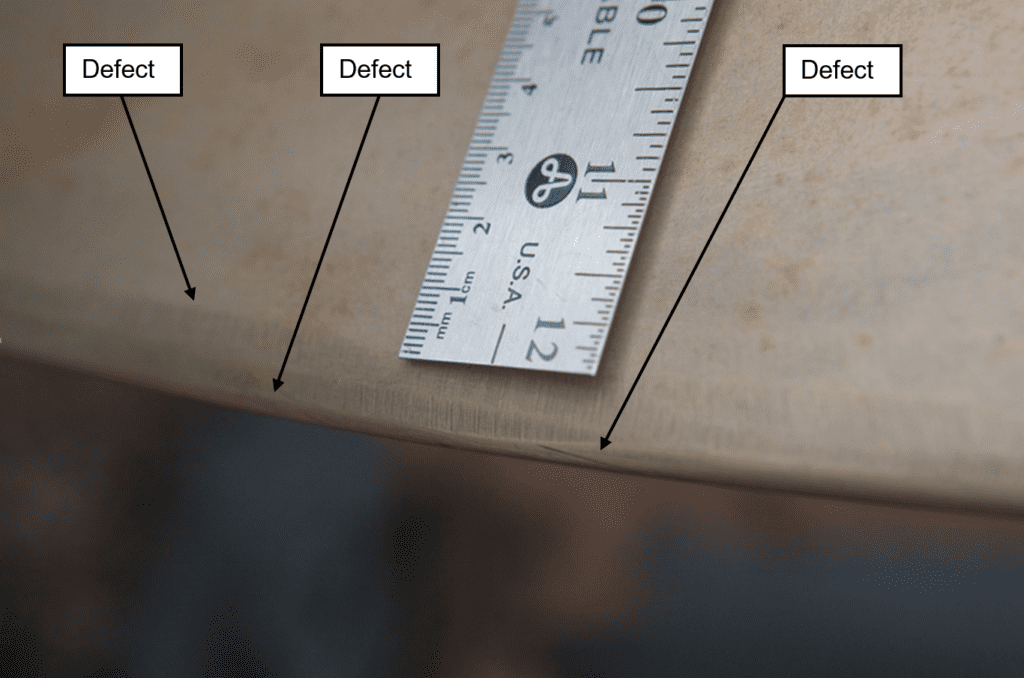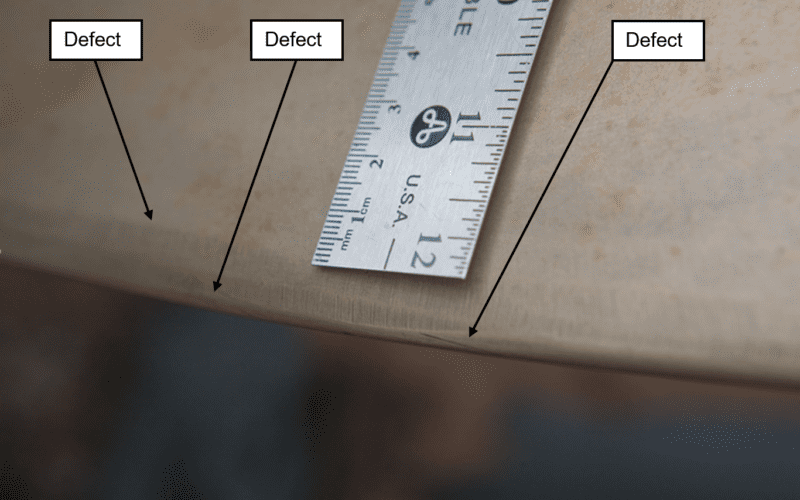(OTTAWA, Ontario) — The slightest deviation in the machining, polishing and finishing of ships’ propeller blades could result in underwater radiated noise and cavitation, even if defects are within the maximum tolerance allowed by classification societies and the ISO 484-1 standard.
A Canada Transport-funded study on the impact of manufacturing tolerances on propeller performance – carried out by Memorial University of Newfoundland, the Defense Research and Development Canada (DRDC) Atlantic Research Center, and propeller manufacturer Dominis Engineering – found the slightest change in propeller geometry resulted in “significant” cavitation, and much earlier than previously thought.

The behavior of a section of propeller blade with leading-edge defects of 94 micrometers (µm), 250 µm and 500 µm were studied using computational fluid dynamics (CFD) at the DRDC Atlantic Research Center and Memorial University in a three-year project that concluded last year.
“Experimental results show that current widely accepted propeller manufacturing tolerances as stated in the ISO standard need to be thoroughly evaluated and investigated further,” said Dominis Engineering President Bodo Gospodnetic, project lead.
The current tolerance for a defect to the leading edge of a propeller blade is 500 µm (0.5 millimeters).
Ship propellers are manufactured according to ISO 484-1, with the majority of propellers made from castings rough machined on computer numerically controlled (CNC) mills and then finished using robotic and manual grinding. However, robotic and manual grinding of propeller surfaces introduces inaccuracies and deviations from the approved design, which can lead to cavitation, erosion, noise, vibration and loss of propeller efficiency.
“The leading edge is a very challenging area to manufacture accurately, yet it has a strong influence on sheet, streak and vortex cavitation,” said Gospodnetic.
Researchers found that a ship with “defective” propeller must travel at a given percentage slower than a vessel with a “correct” propeller to operate below the cavitation inception speed and remain quiet. For example, a ship with a propeller defect of 0.5 mm would have to sail at 45 percent of the speed of a defect-free propeller to avoid cavitation noise. The smaller the defect, the less speed reduction is required to remain quiet.
“The 0.5-mm defect tested is one of the tightest ISO 484-1 propeller manufacturing tolerances, yet it has been demonstrated that it affects cavitation inception significantly and detrimentally. The rules need tightening up,” said Gospodnetic.
ISO 484-1:2015 has been a standard for propellers since 1982 and although the standard was reviewed in 2015 and 2022, the allowable tolerance and geometry remains unchanged.
“We know that 80 percent of underwater radiated noise comes from the propeller, but if ships are legislated to be quiet in sensitive habitats such as the Juan de Fuca Strait, then they will have to limit their speed to below the cavitation inception speed,” said Gospodnetic.
While initial CFD studies show how very small defects can influence cavitation inception, research partners are looking for funding to continue their investigation in second-phase model tests in a cavitation tunnel.
The research paper can be viewed in full here.

